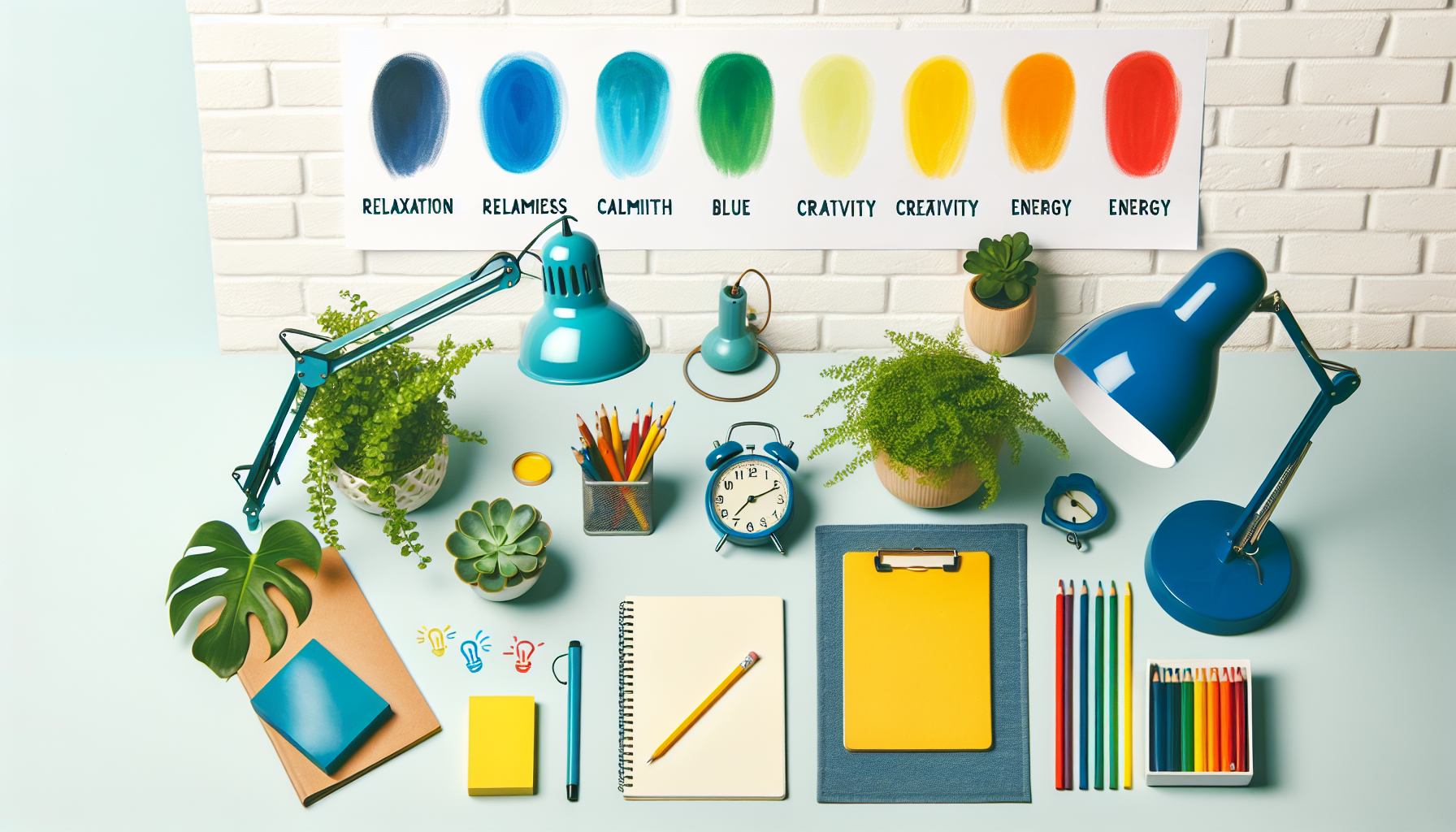Your cart is currently empty!

Color Psychology in Desk Setup Design
Color psychology plays an integral role in desk setup design, profoundly impacting mood, productivity, and creativity. The choice of colors can transform a mundane workspace into a compelling environment that promotes focus and inspires innovation. Understanding the psychological underpinnings of color can guide effective design decisions to cultivate a workspace that suits individual needs.
Blue is a popular choice for desk setups due to its association with calmness and focus. Research indicates that blue enhances cognitive performance and increases productivity. Lighter shades, like sky blue, can create a sense of tranquility, which is ideal for high-pressure environments. Incorporating blue through wall paint, desk accessories, or a chair can create a serene atmosphere conducive to deep work. The calming effect of blue reduces stress, making it a perfect choice for those in demanding jobs.
Green is another excellent color for workspace environments, as it’s connected with balance and refreshment. An abundant color in nature, green is easy on the eyes and has restorative qualities. It’s known to improve reading abilities and concentration. Adding green elements like plants or using green accessories promotes a fresh, vibrant workspace ambiance. This color choice can counteract the fatigue of prolonged screen time and re-energize users.
Yellow is the best color for stimulating creativity and optimism. Its bright hue evokes excitement and innovation, making it an ideal choice for those in creative professions. However, while yellow is uplifting, overuse can lead to restlessness or anxiety. Incorporating yellow through accent pieces like a tabletop lamp or stationary items can inject energy into the space without overwhelming the senses, thus maintaining a balance.
Red is a dynamic color that signifies passion and energy. Often used in fast-paced environments, red can increase heart rate and boost energy levels. It’s a fitting choice for sales professionals or those whose work requires constant interaction. However, similar to yellow, moderation is crucial. Excessive red can cause stress and hinder productivity. It is best introduced in small doses, such as through artwork or an accent wall, to invigorate without overwhelming.
White symbolizes cleanliness and simplicity, offering a sense of order and spaciousness. White desk setups promote a minimalist design aesthetic, making the environment appear uncluttered and organized. This simplicity can reduce distractions, allowing for heightened concentration. However, pure white can sometimes feel sterile, so pairing it with warm accents such as wood or soft textiles can add warmth and comfort to the workspace.
Grey, a neutral color, stands for sophistication and balance. It pairs well with a variety of other colors, making it a versatile choice for desk setups. Light grey can provide a sleek, modern look that doesn’t distract from work, while darker shades add depth. It’s a grounding color that can enhance concentration without influencing mood strongly, thus promoting a stable and productive atmosphere.
Black, if used judiciously, can add elegance and authority to a workspace. It exudes power and can foster a sense of sophistication and stylishness. Yet, too much black can suppress mood and motivation, making it essential to balance with lighter colors or reflective surfaces to maintain light and openness in the space.
Integrating these colors into a workspace extends beyond wall paint. Desk accessories, chairs, lighting fixtures, and even digital backgrounds can be leveraged to introduce new hues. Utilizing color psychology effectively can transform a workspace into one that fuels productivity, comfort, and creativity, tailored to the individual’s personal and professional needs.
It’s crucial to consider personal preferences and job function when selecting colors for a desk setup. While general principles of color psychology offer guidance, individual responses to color can vary. Testing different combinations and elements, like adjusting lighting or changing decorations, can help achieve the perfect balance that maximizes productivity and well-being. By thoughtfully applying the principles of color psychology, anyone can cultivate a stimulating and supportive work environment in their desk setup.
by
Tags:
Leave a Reply